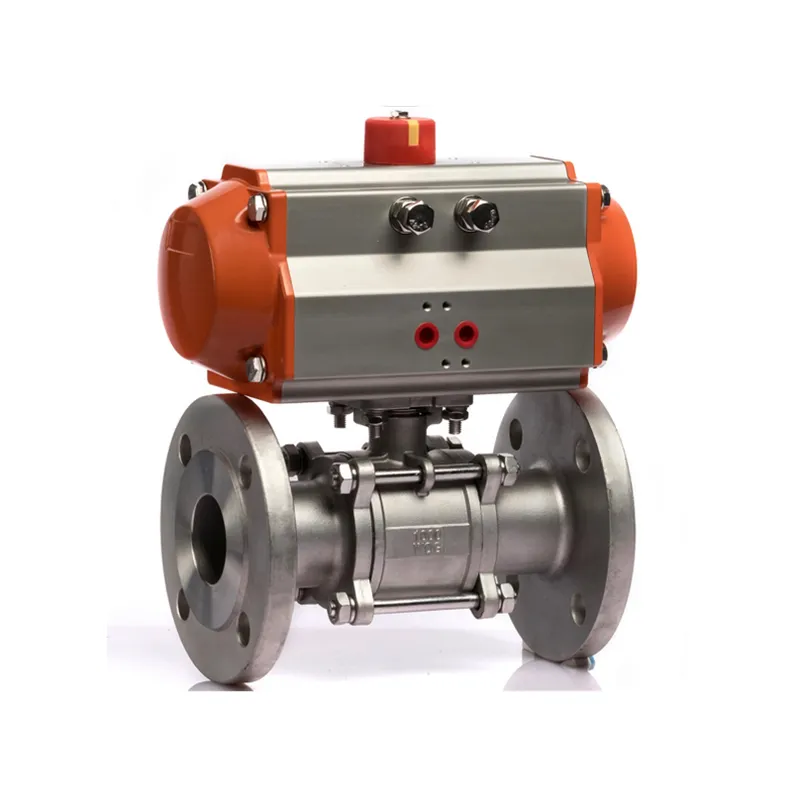Material Selection for Flange Ball Valve
2025-07-03
The flange ball valve is an essential component in piping systems, used for controlling the flow of various fluids, including gases, liquids, and slurries. It operates by using a spherical ball with a hole in it, which aligns with the pipeline when fully open and blocks flow when closed. The selection of materials for flange ball valves is critical to ensuring their performance, durability, and reliability, particularly in challenging operating environments.
1. Factors Influencing Material Selection
Material selection for flange ball valves depends on various factors, including:
Operating Environment: The temperature, pressure, and chemical composition of the fluid being transported must be taken into account. For instance, corrosive fluids, high temperatures, or extreme pressure conditions require materials that can withstand these stresses.
Corrosion Resistance: Flange ball valves are frequently exposed to aggressive media, so corrosion resistance is crucial. Materials that are resistant to oxidation, pitting, and stress corrosion cracking must be selected for such environments.
Mechanical Properties: Strength, hardness, and impact resistance are key mechanical properties that ensure the valve can withstand the operational forces exerted by high-pressure fluids or gases.
Cost Considerations: Cost is always a factor in material selection, as expensive materials like titanium or exotic alloys may be unnecessary for less demanding applications.
Fabrication and Availability: The ease of fabrication and the availability of the chosen material can also influence the selection, particularly when quick delivery and cost-effectiveness are required.
2. Common Materials for Flange Ball Valves
Several materials are commonly used in the construction of flange ball valves, each suited to different conditions. Here are some of the most frequently selected materials:
a. Carbon Steel (CS)
Properties: Carbon steel is a widely used material due to its strength, affordability, and ease of fabrication. It offers good performance under moderate pressure and temperature conditions.
Applications: It is suitable for general-purpose applications where corrosion resistance is not a primary concern. However, carbon steel may require protective coatings to improve its resistance to corrosion in aggressive environments.
Limitations: Its corrosion resistance is limited, and it is not suitable for highly acidic or alkaline fluids.
b. Stainless Steel (SS)
Properties: Stainless steel is known for its excellent corrosion resistance, high strength, and ability to withstand a wide range of temperatures. Grades like 304 and 316 stainless steel are commonly used for valve construction.
Applications: Stainless steel valves are ideal for applications in the food, chemical, pharmaceutical, and marine industries, where resistance to corrosion and hygiene are critical.
Limitations: Stainless steel is more expensive than carbon steel and may not be the best choice for extremely high-temperature or high-pressure applications.
c. Alloy Steel
Properties: Alloy steels are often used for high-strength applications, offering enhanced mechanical properties due to the inclusion of elements like chromium, molybdenum, and nickel.
Applications: These materials are used in high-pressure and high-temperature conditions, such as in power plants, oil and gas industries, and chemical processing plants.
Limitations: Alloy steels may be prone to corrosion in certain environments unless properly alloyed or coated.
d. Cast Iron
Properties: Cast iron is another affordable material used for flange ball valves. It is strong, durable, and offers good wear resistance.
Applications: It is commonly used in low-pressure systems for water treatment, HVAC, and other industrial processes.
Limitations: Cast iron is brittle and less resistant to corrosion compared to other materials like stainless steel.
e. Bronze and Brass
Properties: Bronze (typically copper-based alloys) and brass (copper-zinc alloys) offer excellent corrosion resistance, particularly in marine and freshwater environments.
Applications: These materials are commonly used in applications involving water, gas, and low-pressure systems. They are often seen in residential and commercial settings.
Limitations: Bronze and brass are less suitable for high-temperature and high-pressure applications compared to stainless steel or alloy steel.

f. Exotic Alloys (Titanium, Inconel, Hastelloy)
Properties: Exotic alloys such as titanium, Inconel, and Hastelloy are used for extreme environments. These materials offer outstanding corrosion resistance, high strength, and performance under high temperatures and pressures.
Applications: Used in highly corrosive applications such as chemical processing, petrochemical industries, and aerospace.
Limitations: Exotic alloys are expensive, making them unsuitable for general-purpose use. They are typically reserved for highly specialized and critical applications.
3. Sealing Materials
In addition to the body and ball material, sealing materials are a key part of flange ball valve design. These materials are responsible for preventing leaks and maintaining the integrity of the valve's operation. Common sealing materials include:
PTFE (Polytetrafluoroethylene): Used for its high chemical resistance and ability to withstand a wide range of temperatures.
Nitrile Rubber (NBR): Often used in lower temperature applications for its flexibility and resistance to oils and fuels.
EPDM (Ethylene Propylene Diene Monomer): Ideal for applications involving water and steam due to its excellent resistance to heat, water, and ozone.
4. Design Considerations
Material selection must also take into account the design features of the flange ball valve. The thickness of the valve body, the type of ball (full-port or reduced-port), and the valve seat materials will affect both the material choice and the performance of the valve. For example, valves designed to handle corrosive fluids may have a more robust design with additional coatings or linings.
5. Conclusion
The material selection process for flange ball valves involves a delicate balance of technical, environmental, and economic factors. By carefully considering the operating conditions, corrosion resistance, strength, and cost, the most appropriate material can be chosen for the valve's construction. Whether it’s carbon steel, stainless steel, alloy steel, or an exotic material, each choice offers unique advantages tailored to specific applications. Ultimately, selecting the right material will ensure the valve’s durability, safety, and long-term performance in its operating environment.
As a professional manufacturer and supplier, we provide high-quality products. If you are interested in our products or have any questions, please feel free to contact us.


